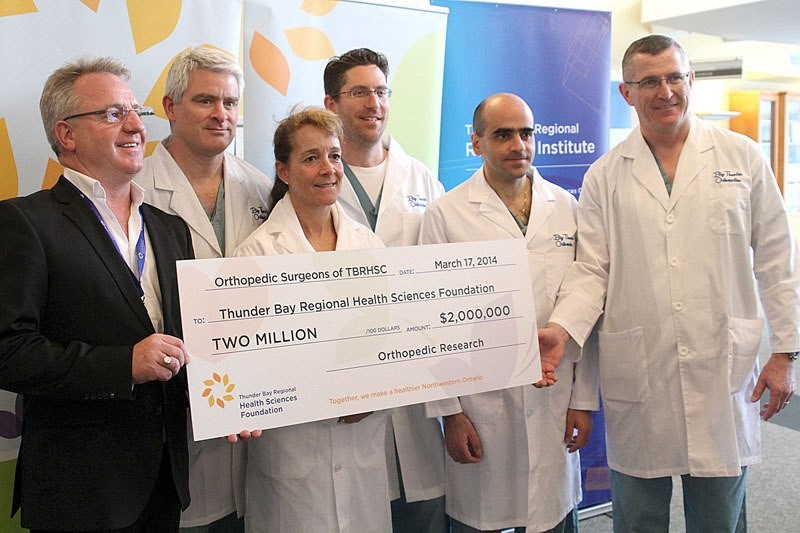Six surgeons have put their money where their mouths are – to the tune of $2 million over 10 years.
The six Thunder Bay Regional Health Sciences Centre physicians will contribute more than $30,000 apiece annually for the next decade to help fund a local orthopaedic research program.
Surgeon Kurt Droll said the doctors recognized a need, realized the money wouldn’t be forthcoming from the province and decided it was too important to let slide.
So they took care of it themselves.
“We have a huge need here in Northwestern Ontario with regards to patient care in orthopaedics,” said Kurt Droll, one of the six surgeons involved in the donation, one of the largest in the history of the Thunder Bay Regional Health Sciences Foundation.
“In order to take it to the next level we have to generate some research initiatives. Sadly, over the last couple of years, we’ve run into a few barriers, that being a lack of financial resources and also a lack of human resources.”
Researchers are eying higher amputation rates for diabetes patients, which in Northern Ontario are three times higher than the provincial average.
Droll said the goal is to reduce that rate by 50 per cent, but without being able to measure and characterize the extent of the problem first.
“Hopefully once that’s accomplished we can take the next step and bring forth some innovative initiatives that will hopefully reduce those amputation rates,” Droll said.
Fellow surgeon David Puskas said the idea was borne out of a desire to create an academic future, not to mention old-fashioned philanthropy.
“Our group is very conscious of our role in the community and the way that we benefit from being in the community,” Puskas said.
“And we’d like to see the quality of the management of specific issues improve, so we’re happy to contribute to it.”
Foundation board member Clint Harris said they’re hoping the donation will start the ball rolling throughout the institution.
“This announcement will probably will get some people talking with regards to the other groups in the hospital. It’s the largest donation in relation to any of the groups that work at the hospital. Two-million dollars might spark some attention from some of the other groups,” Harris said.
The move could have long-term effects in the community, said Janet Northan, the hospital’s director of government relations and interim director of clinical research.
Research creates jobs and more jobs mean more youth staying in the city, she said.
“As more physicians follows the lead of this group, that snowball effect will get better and our community will be healthier, wealthier and smarter,” Northan said.
